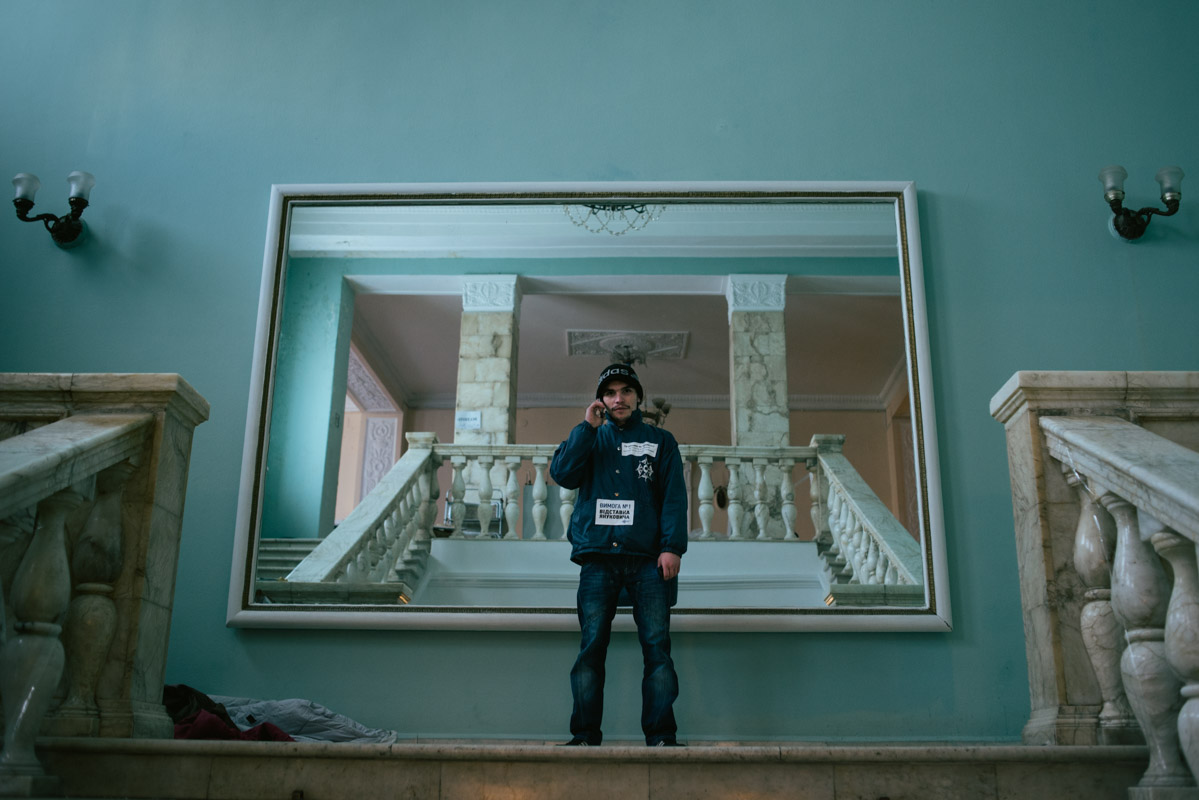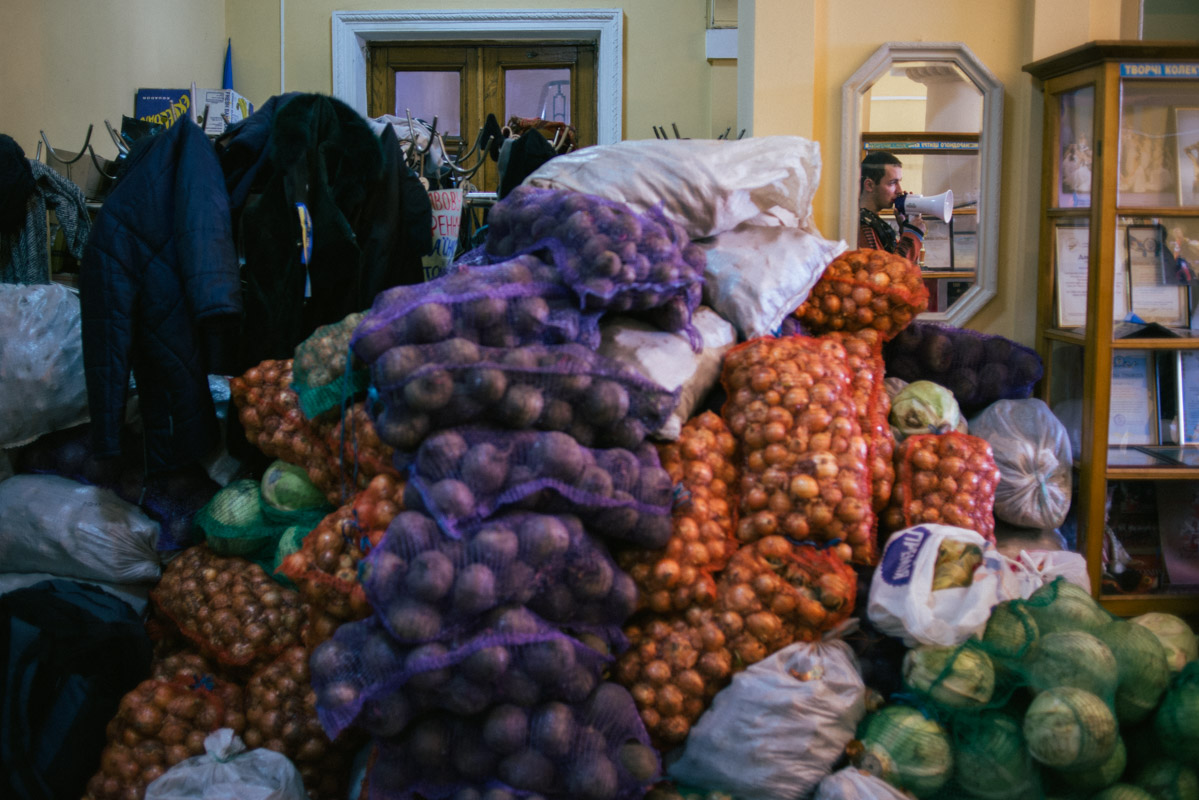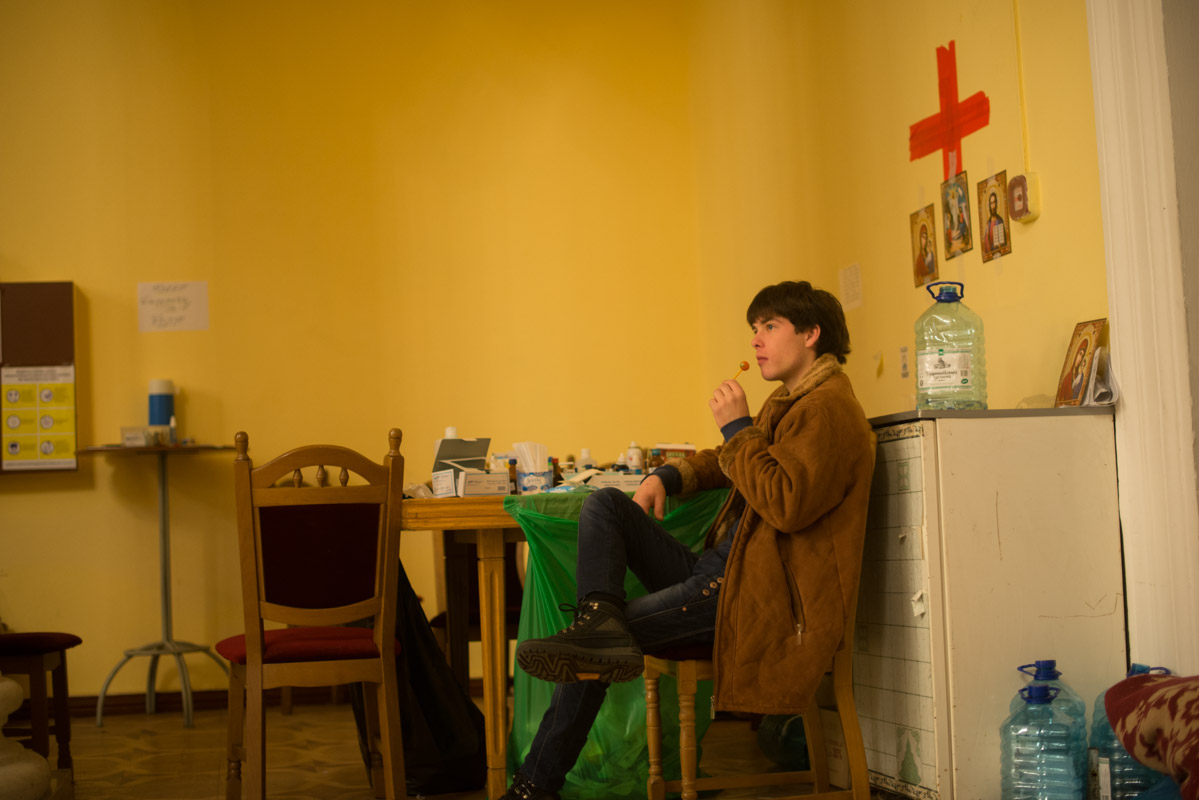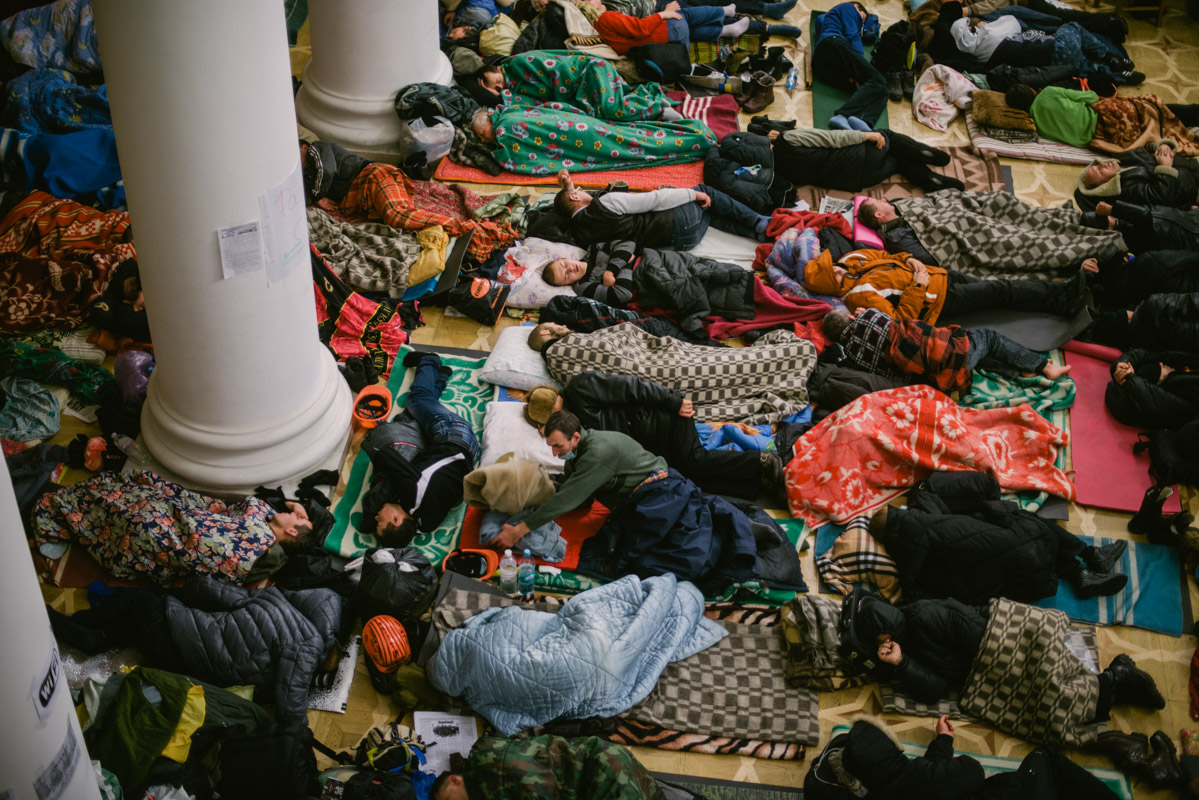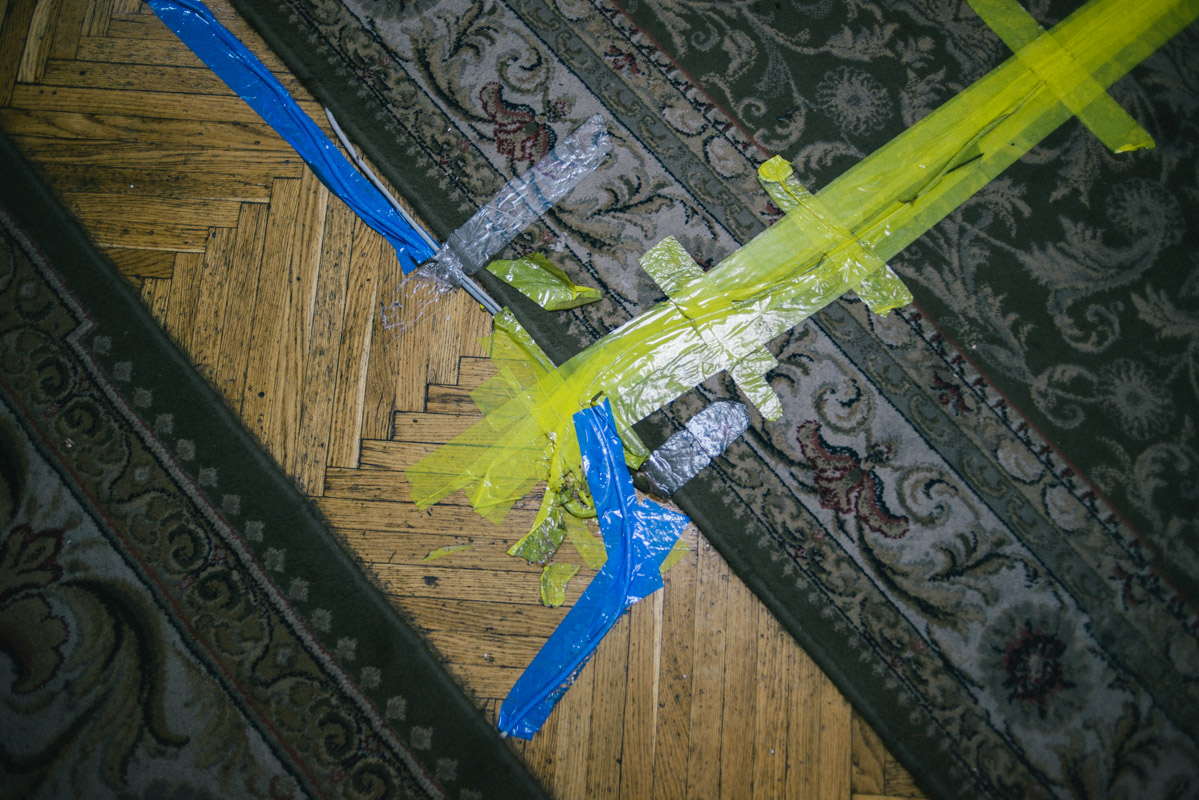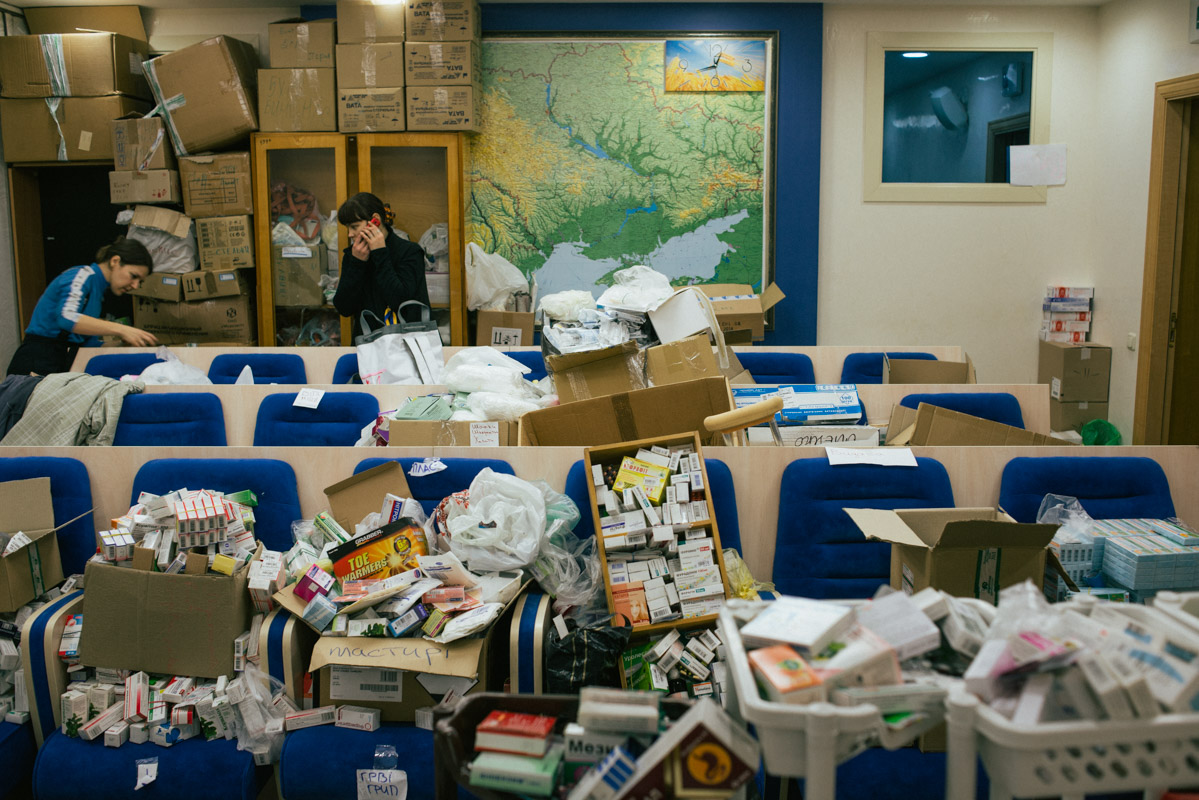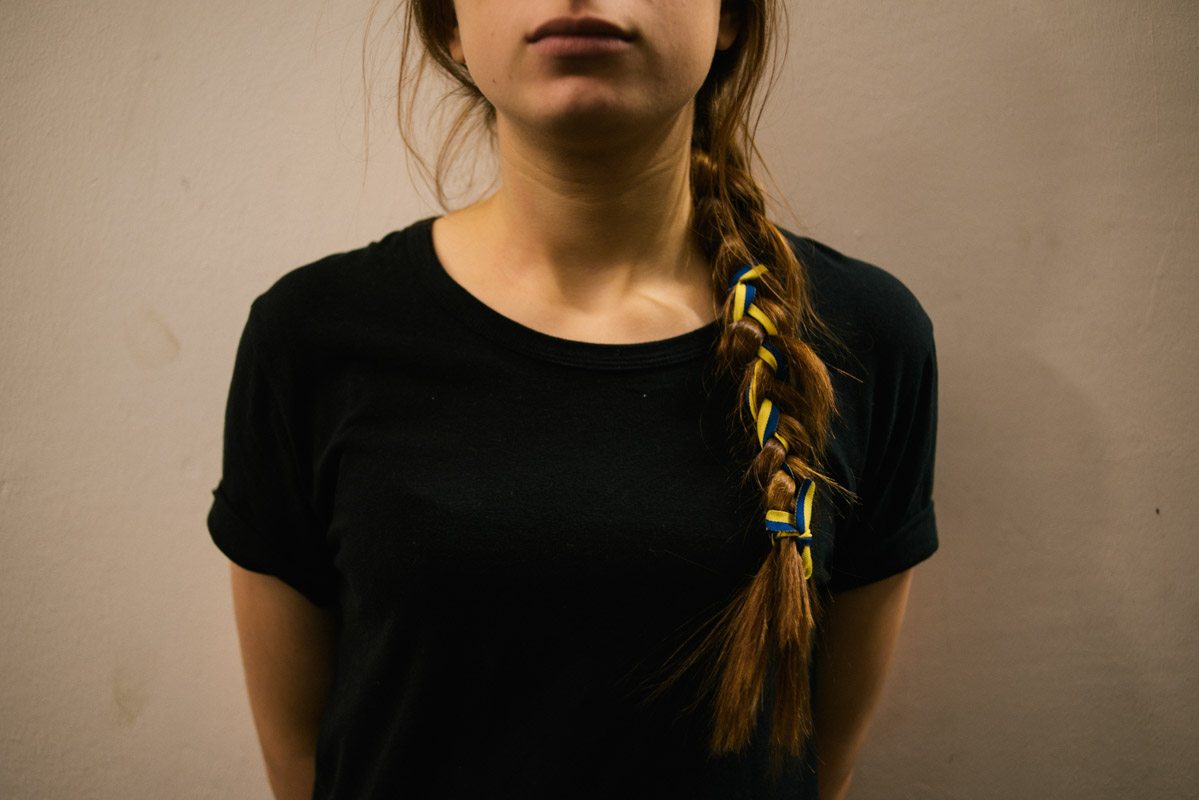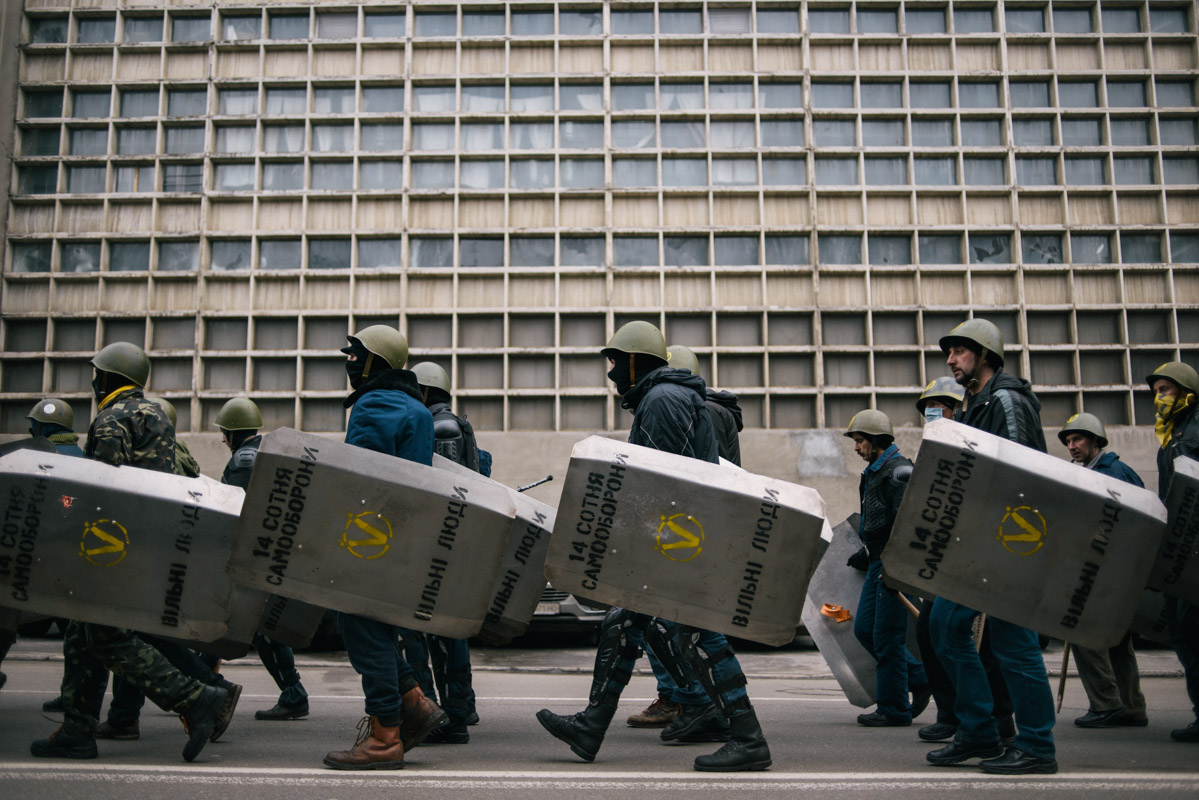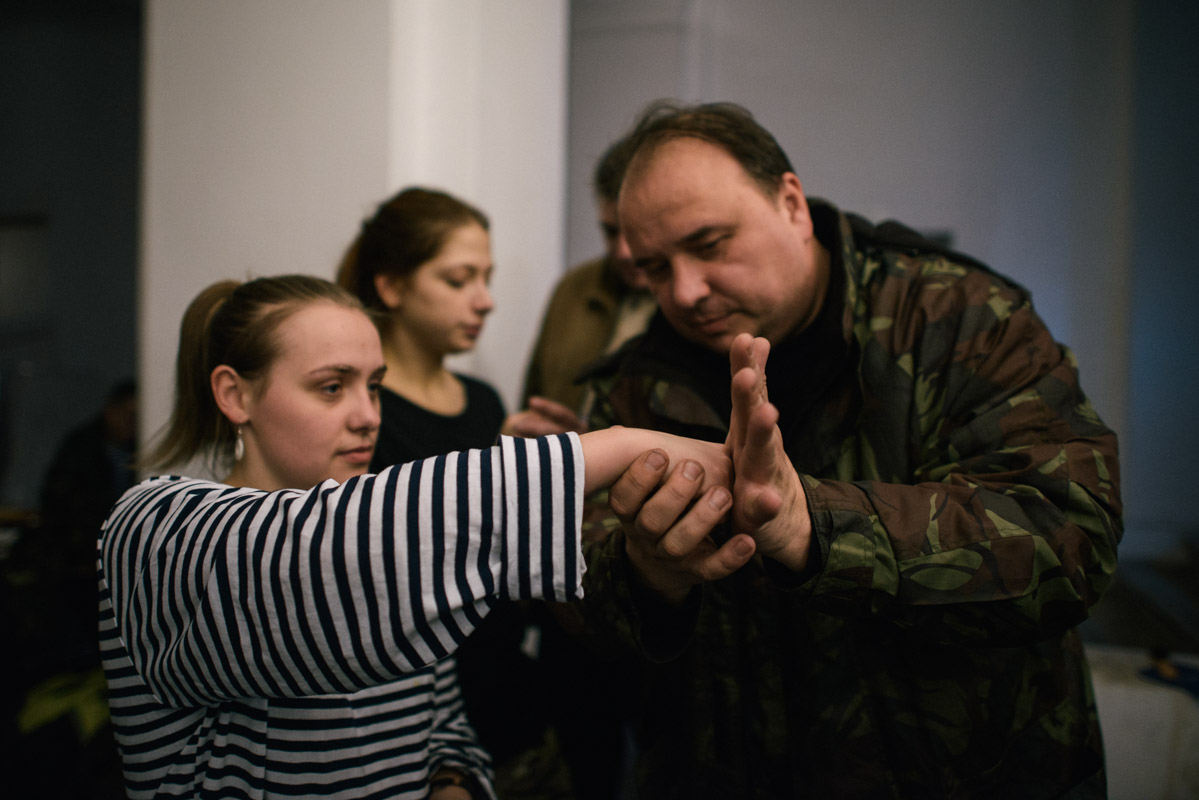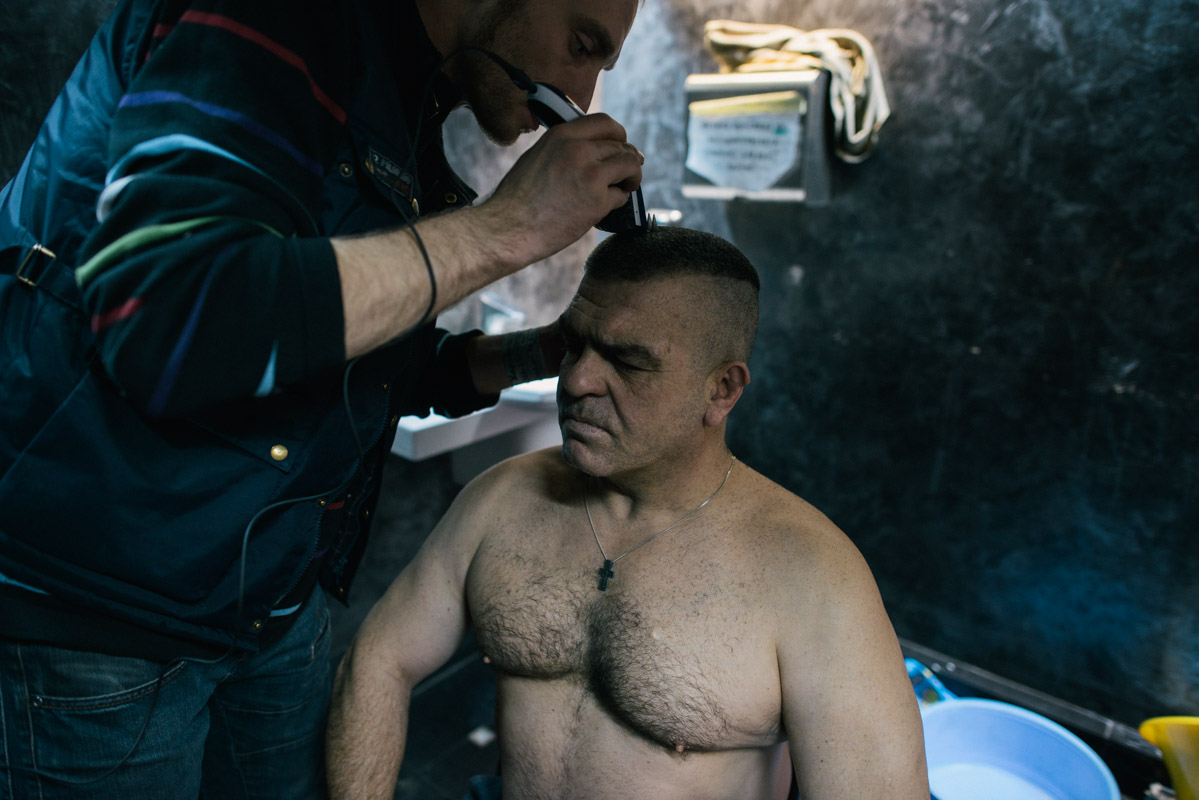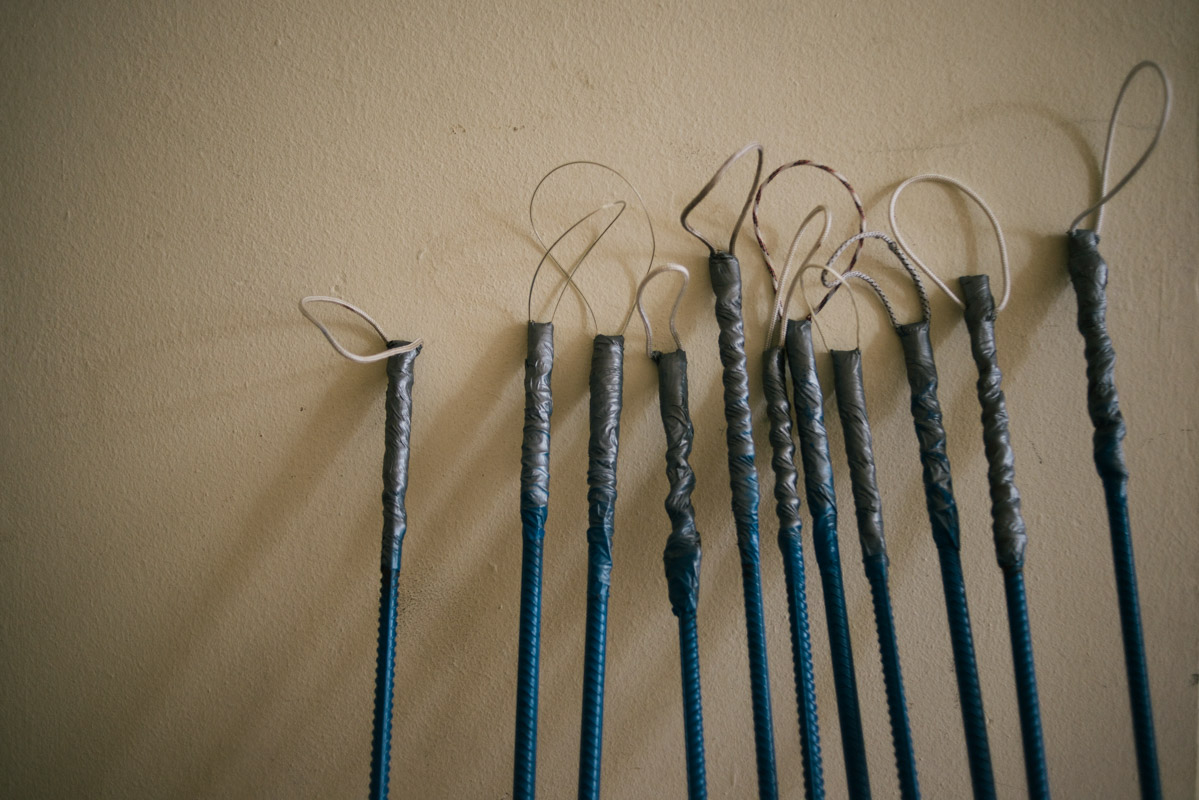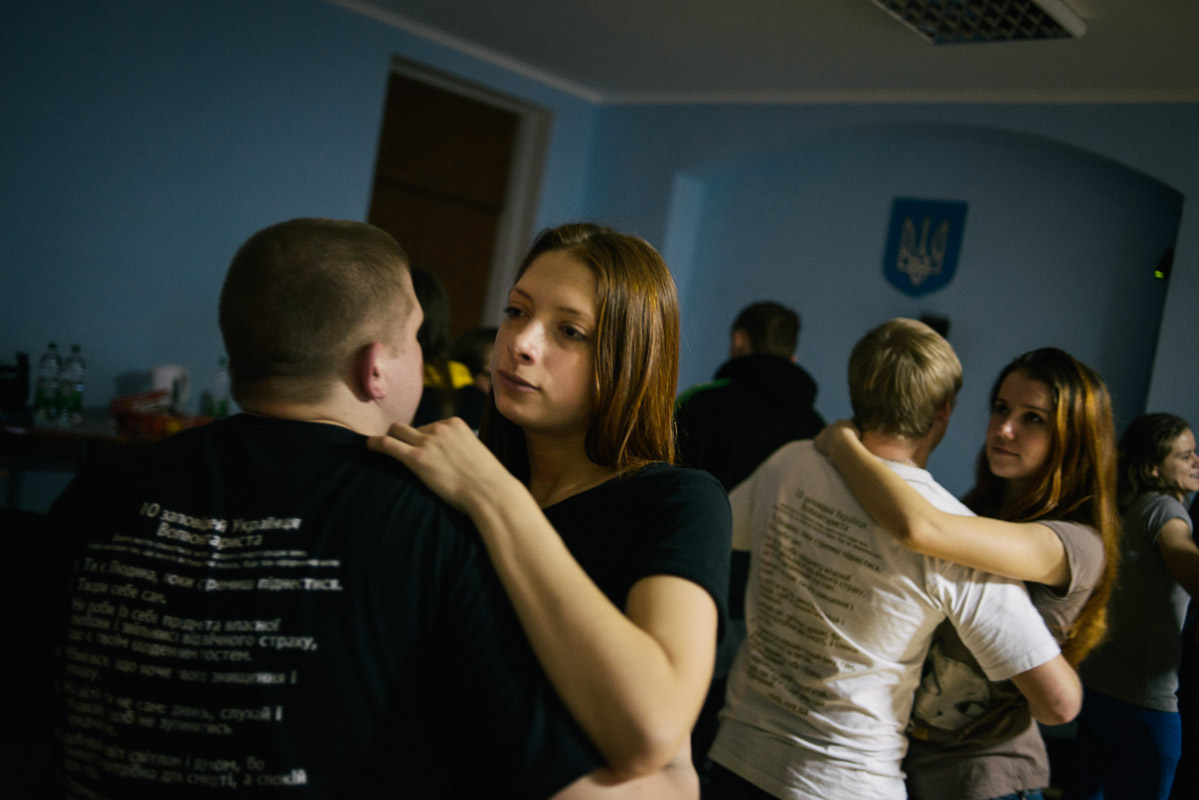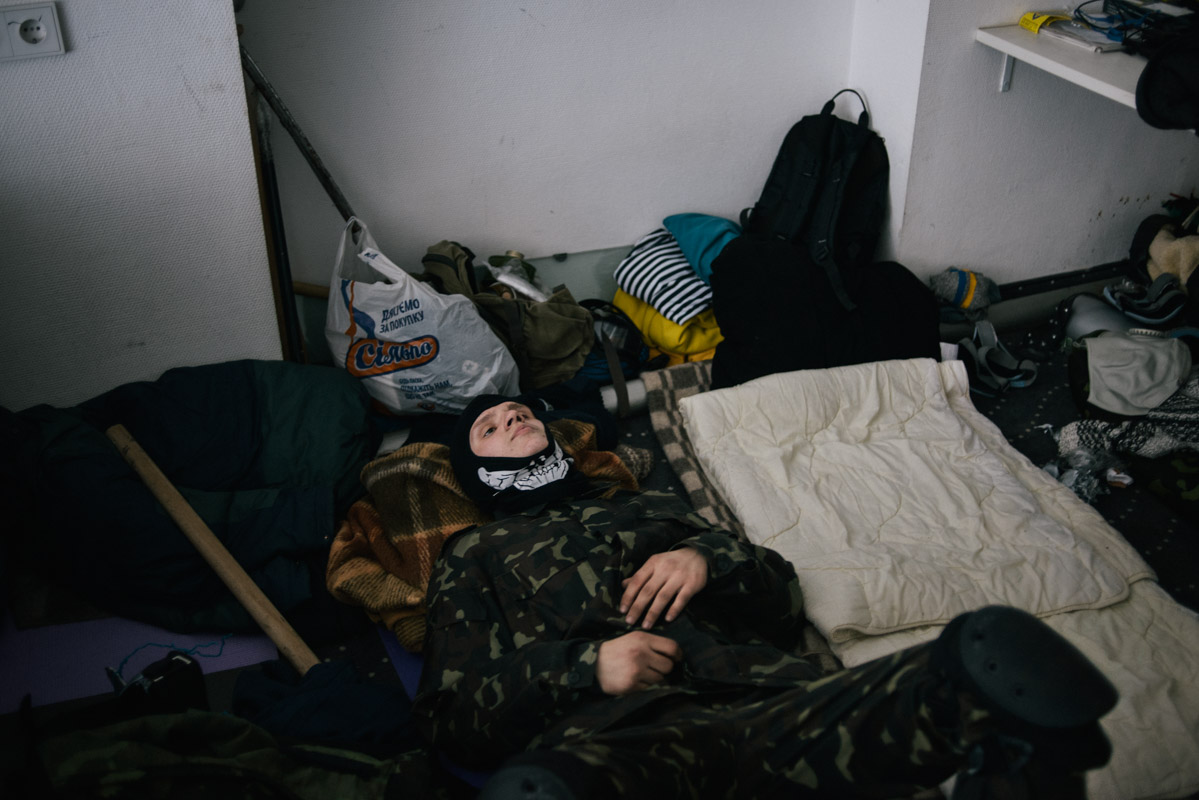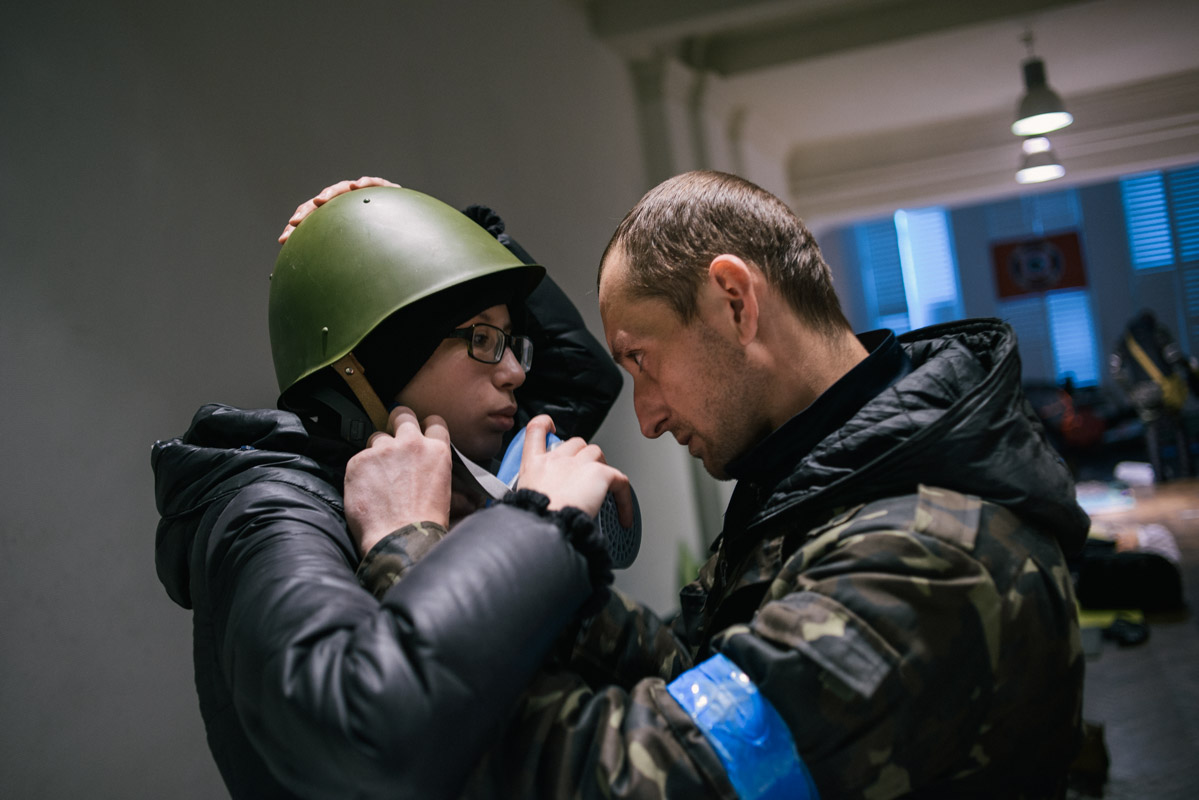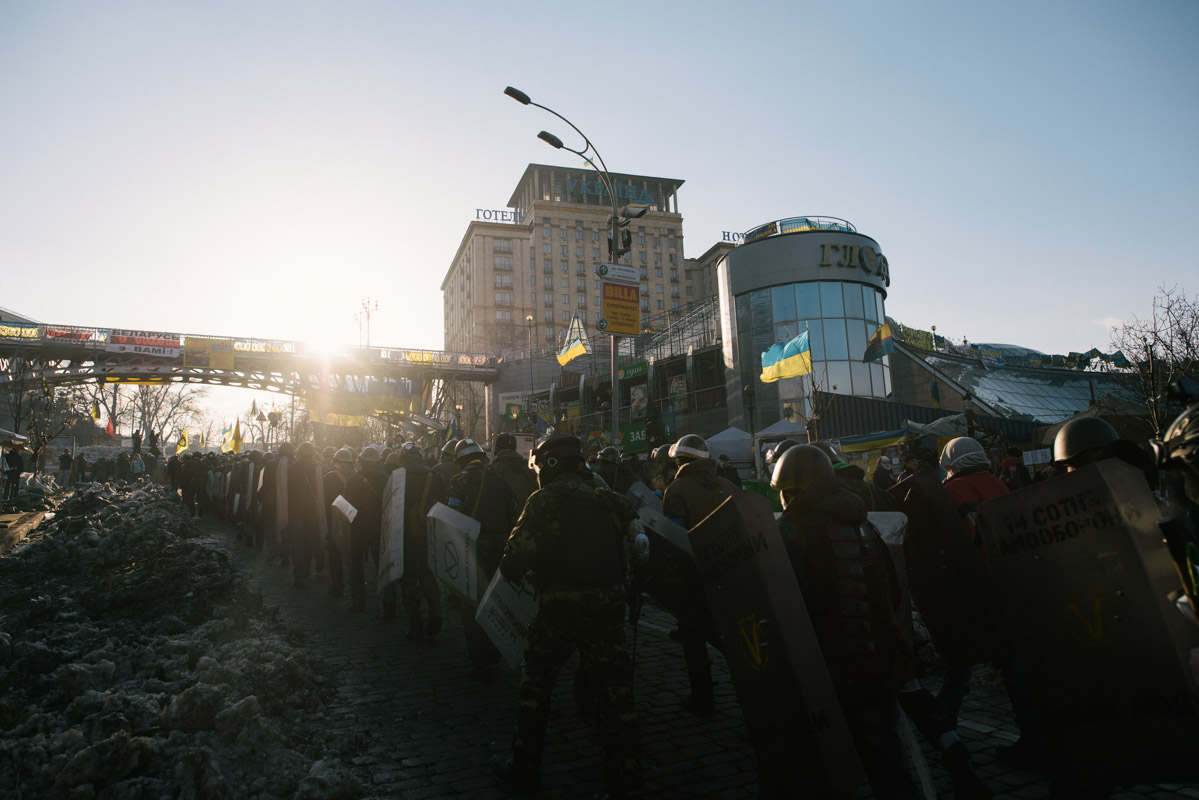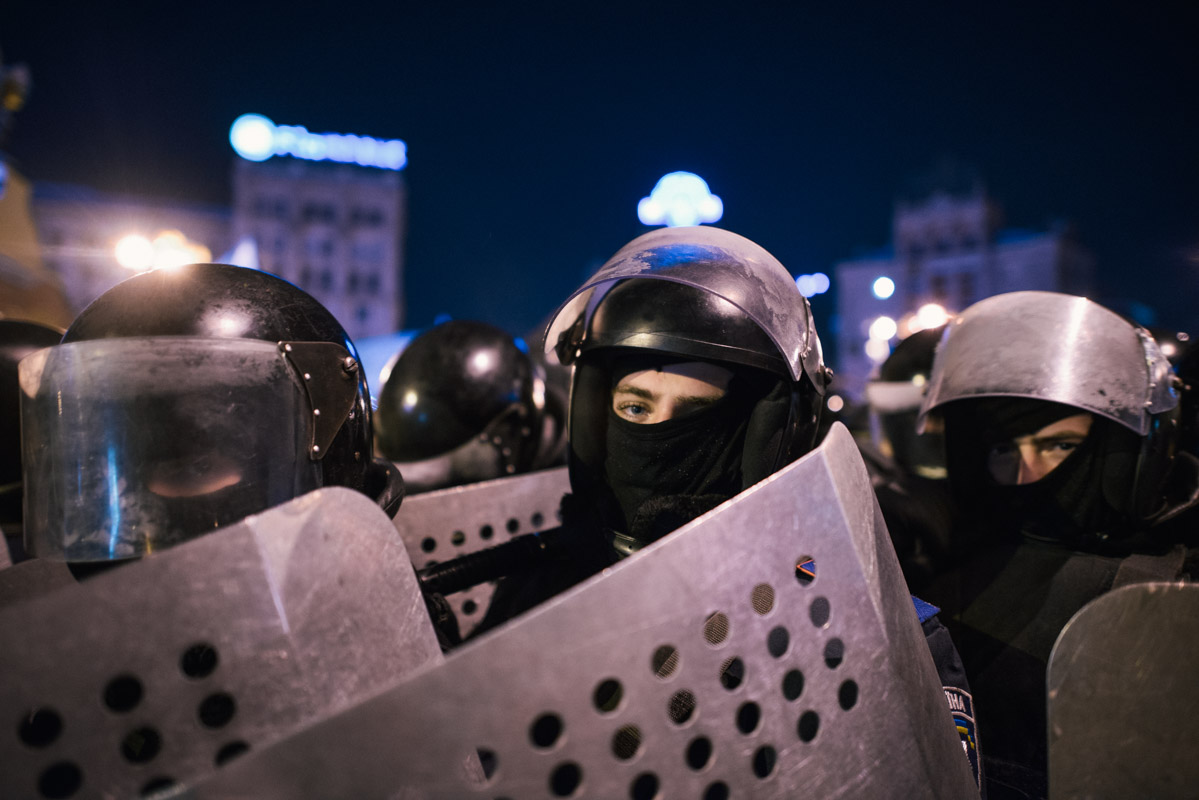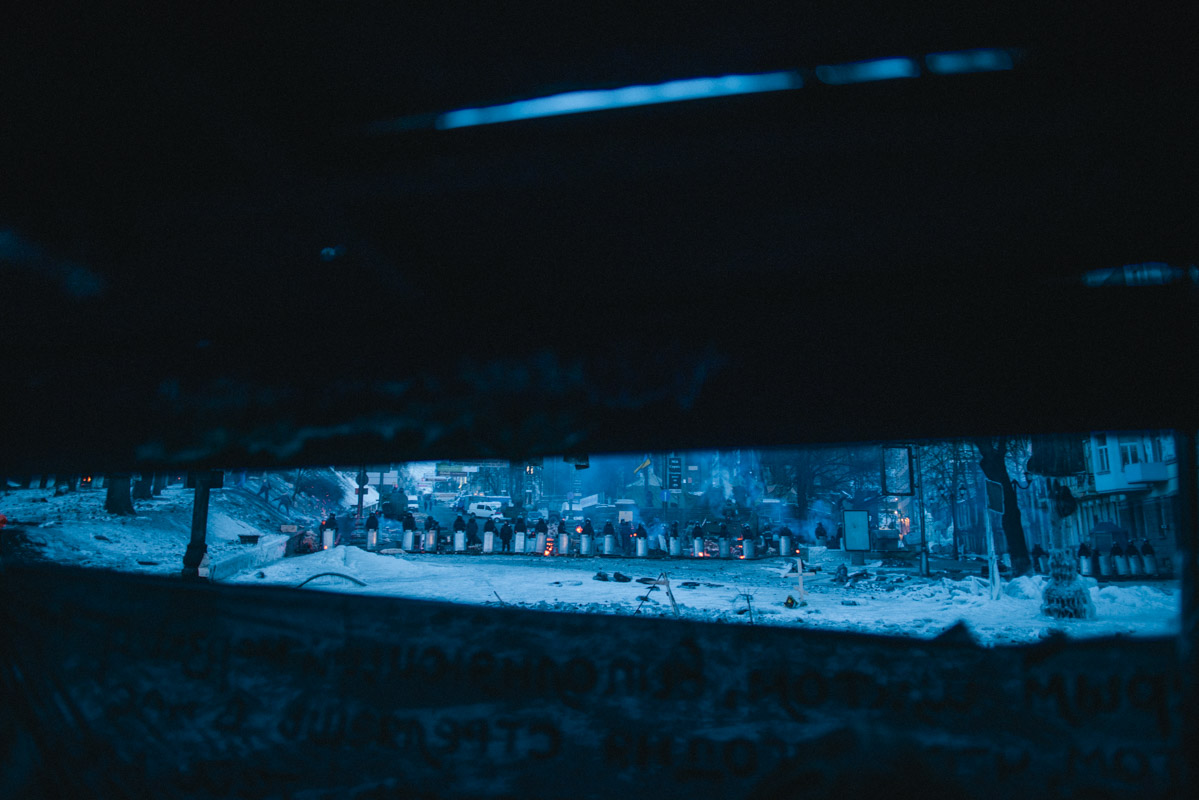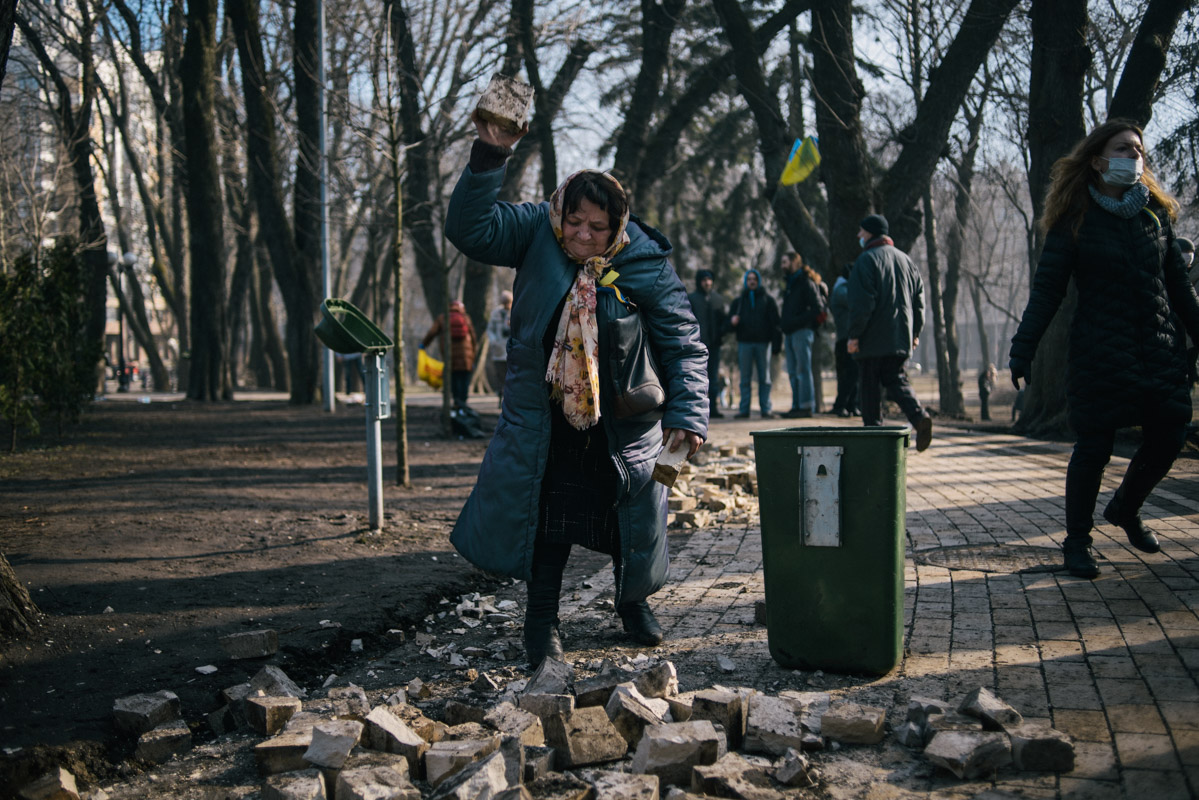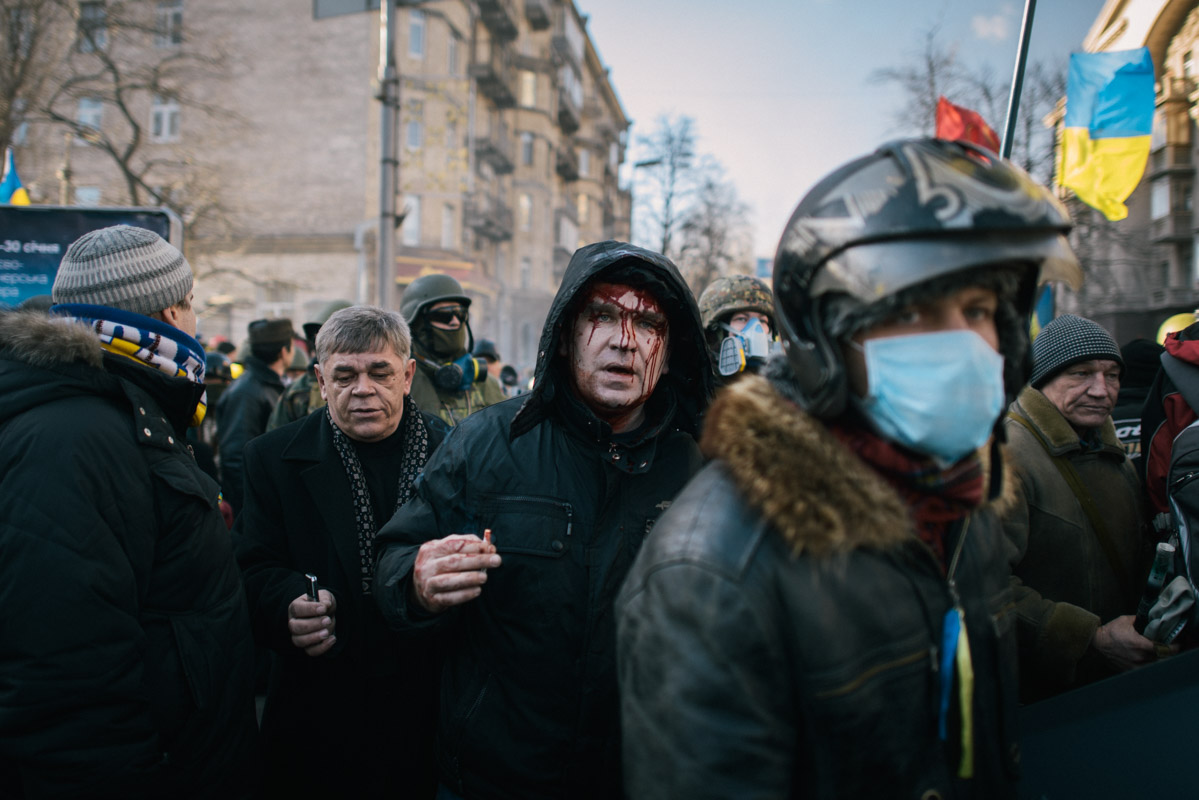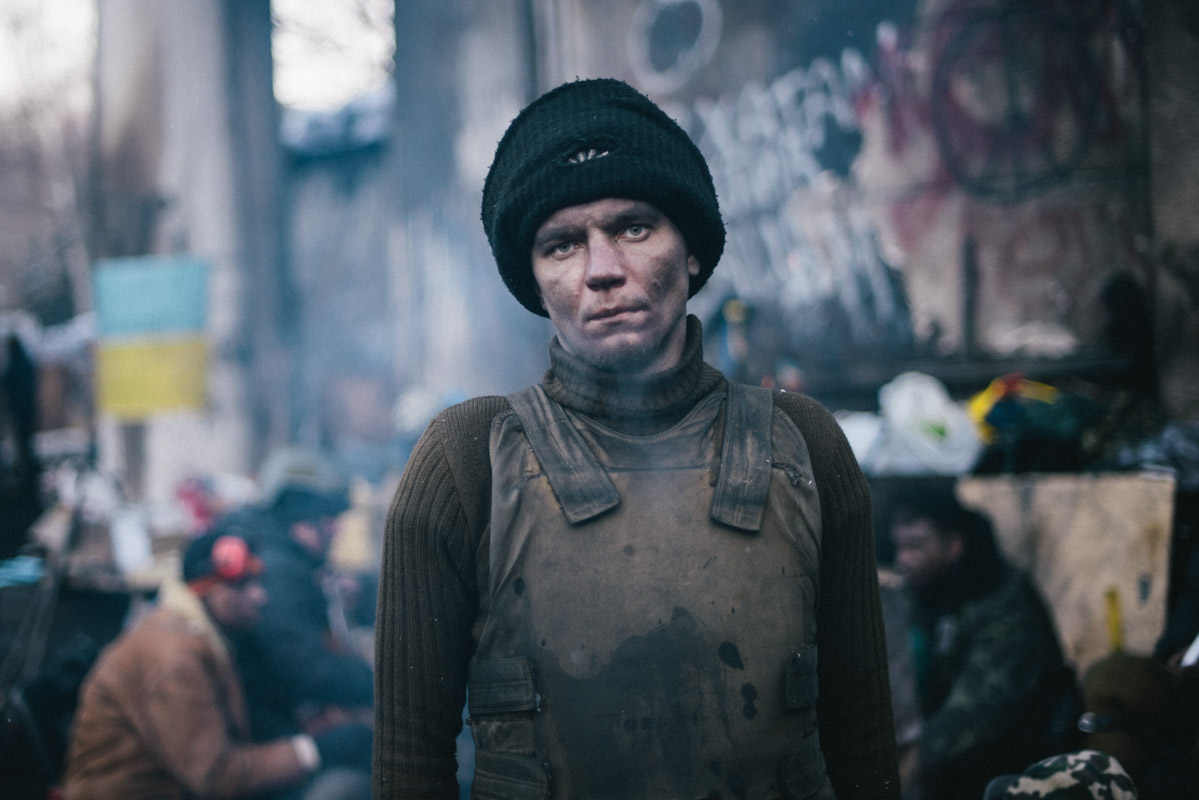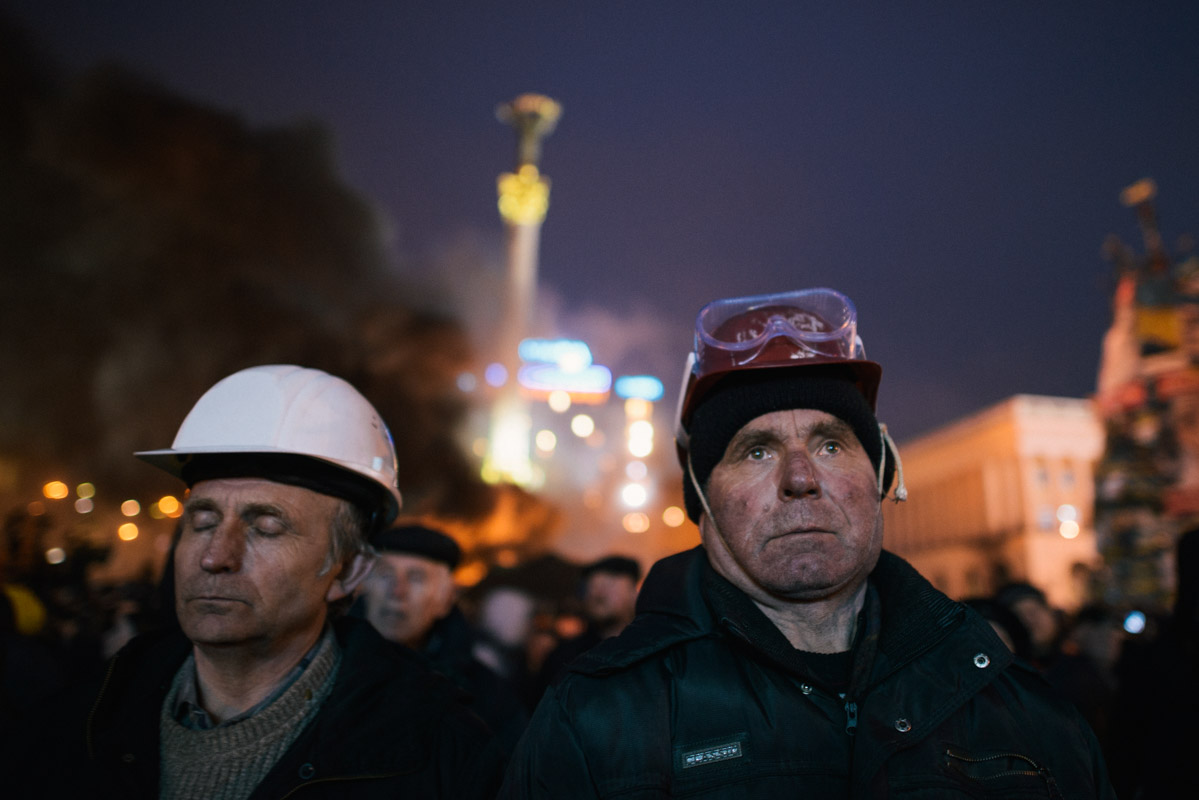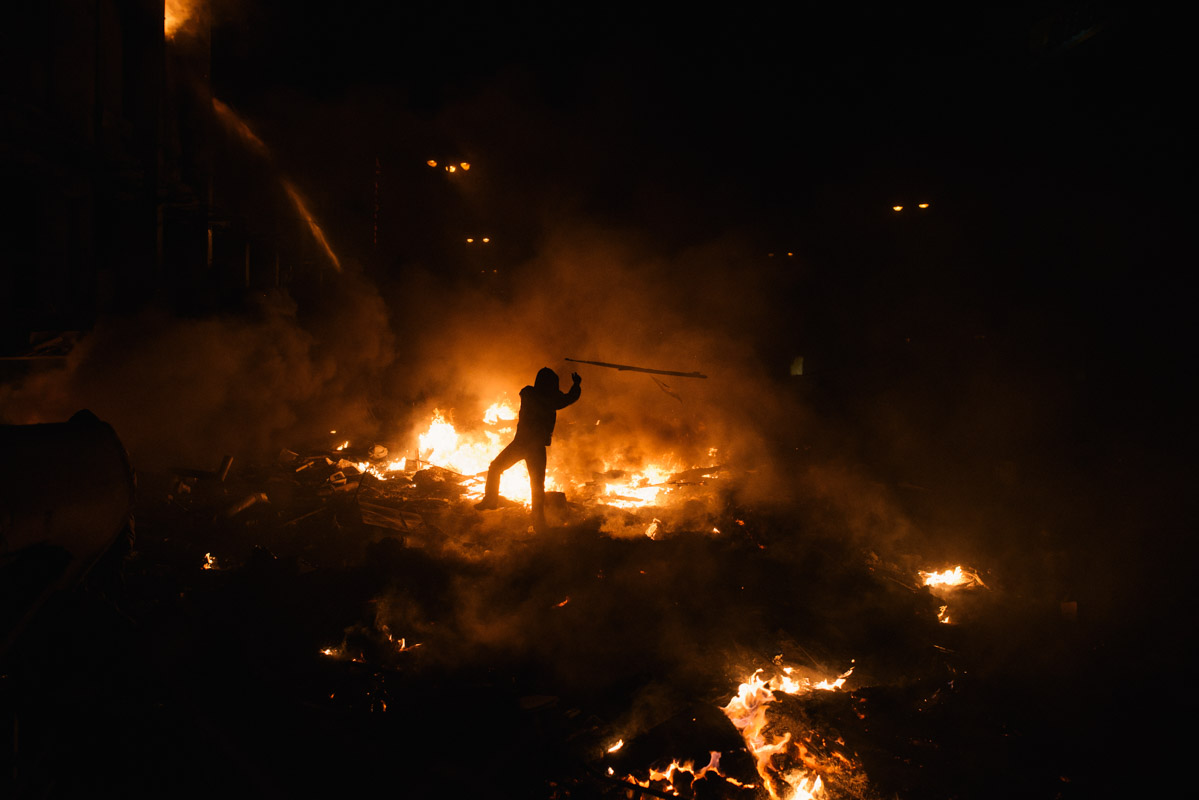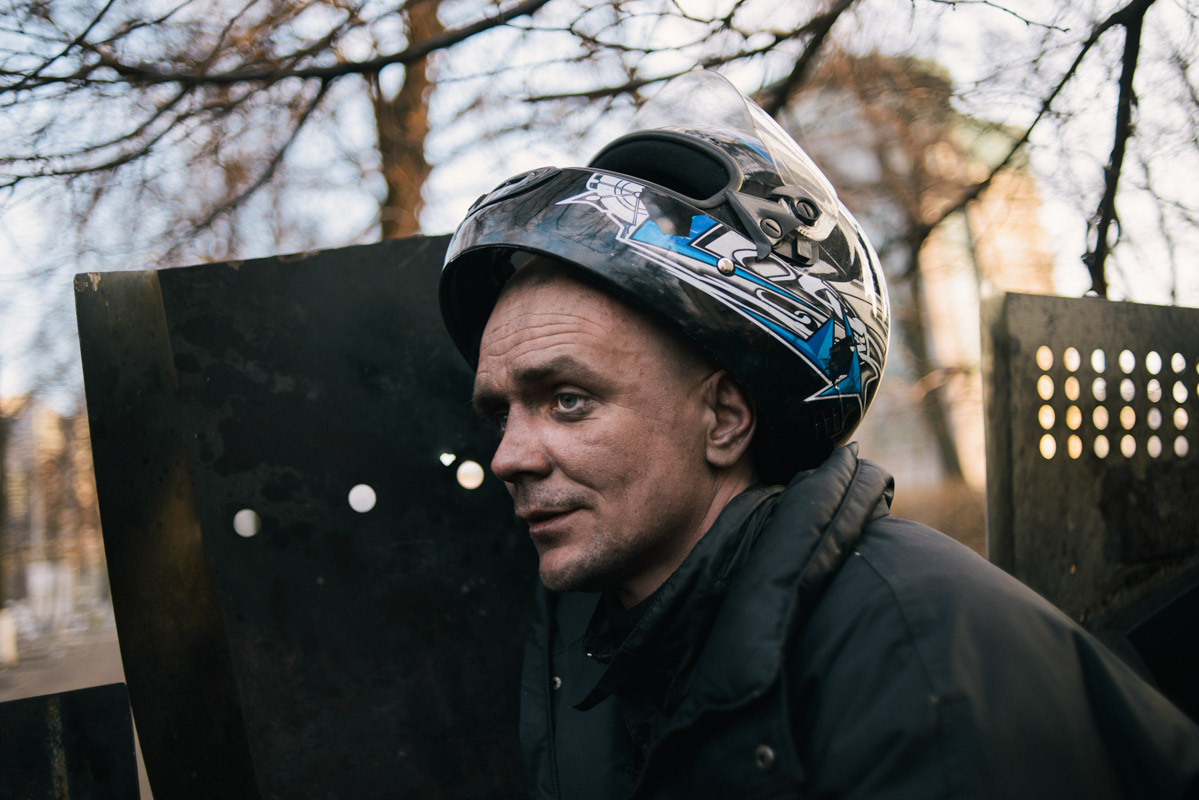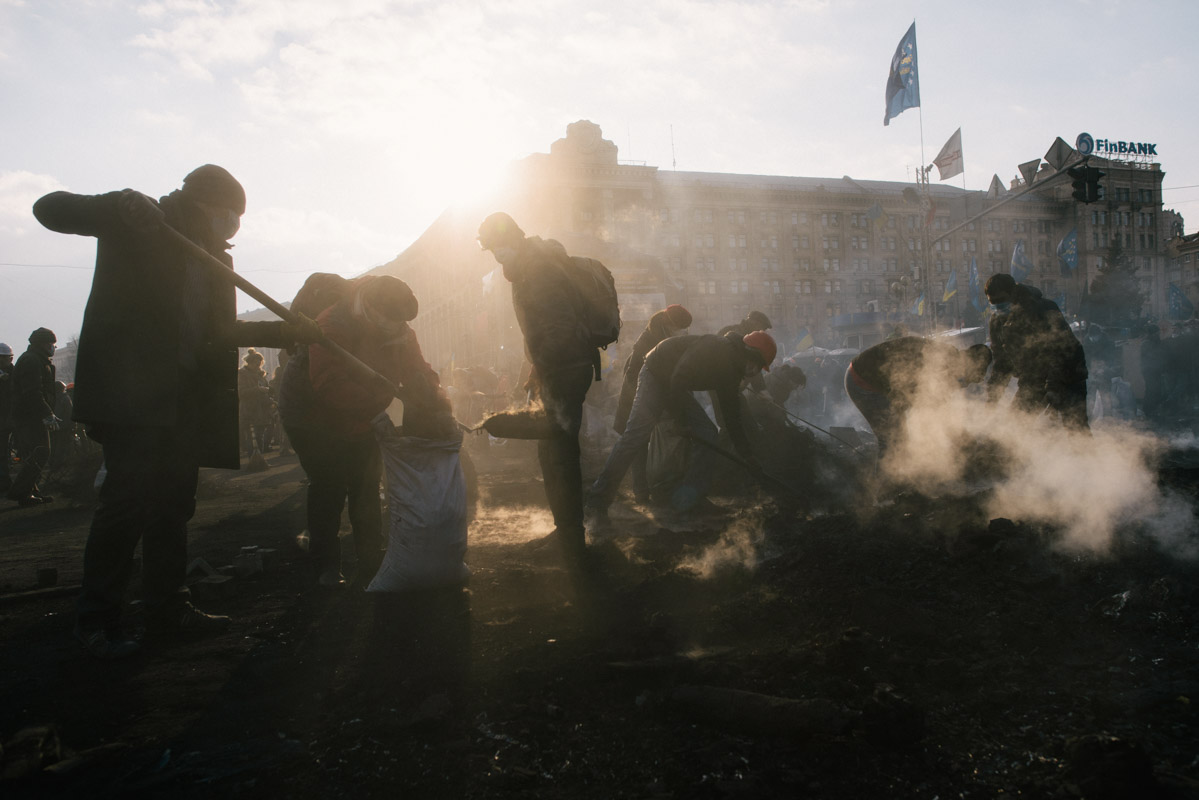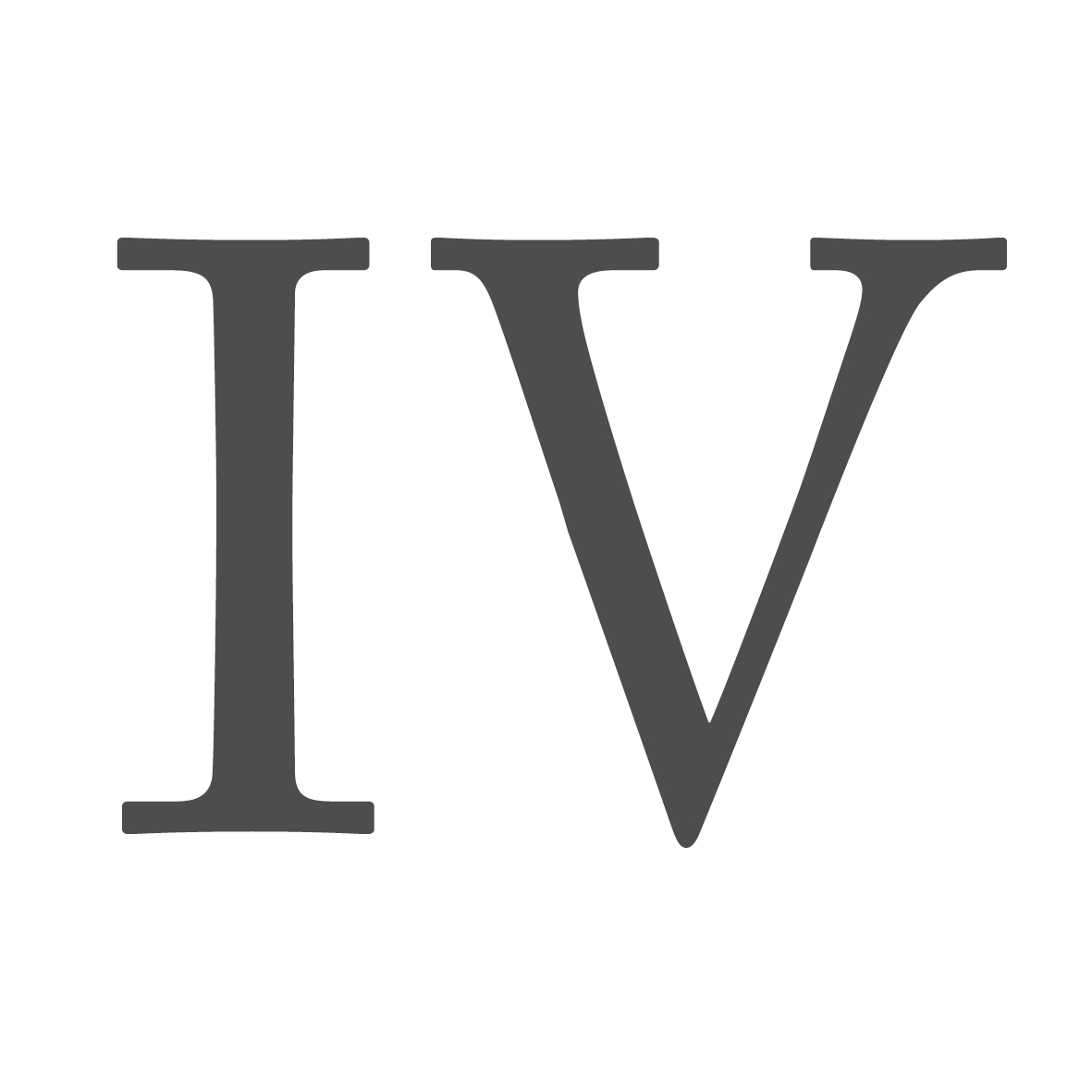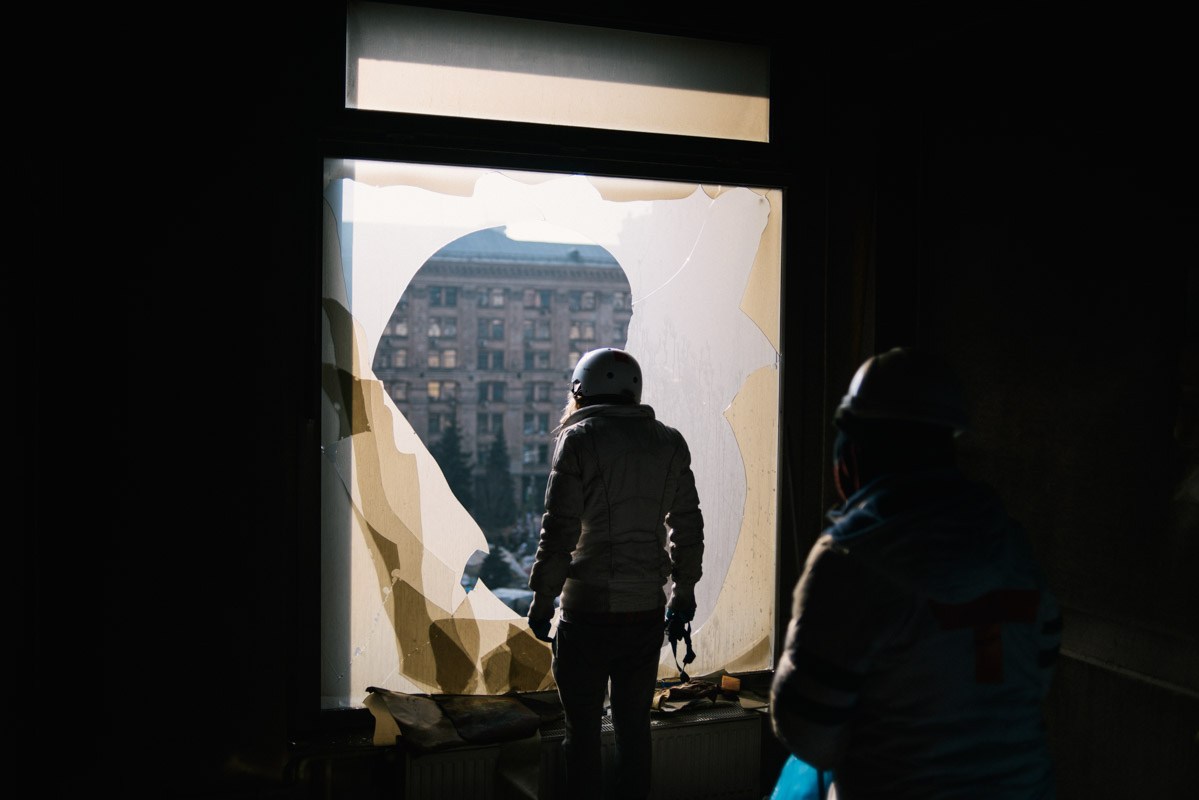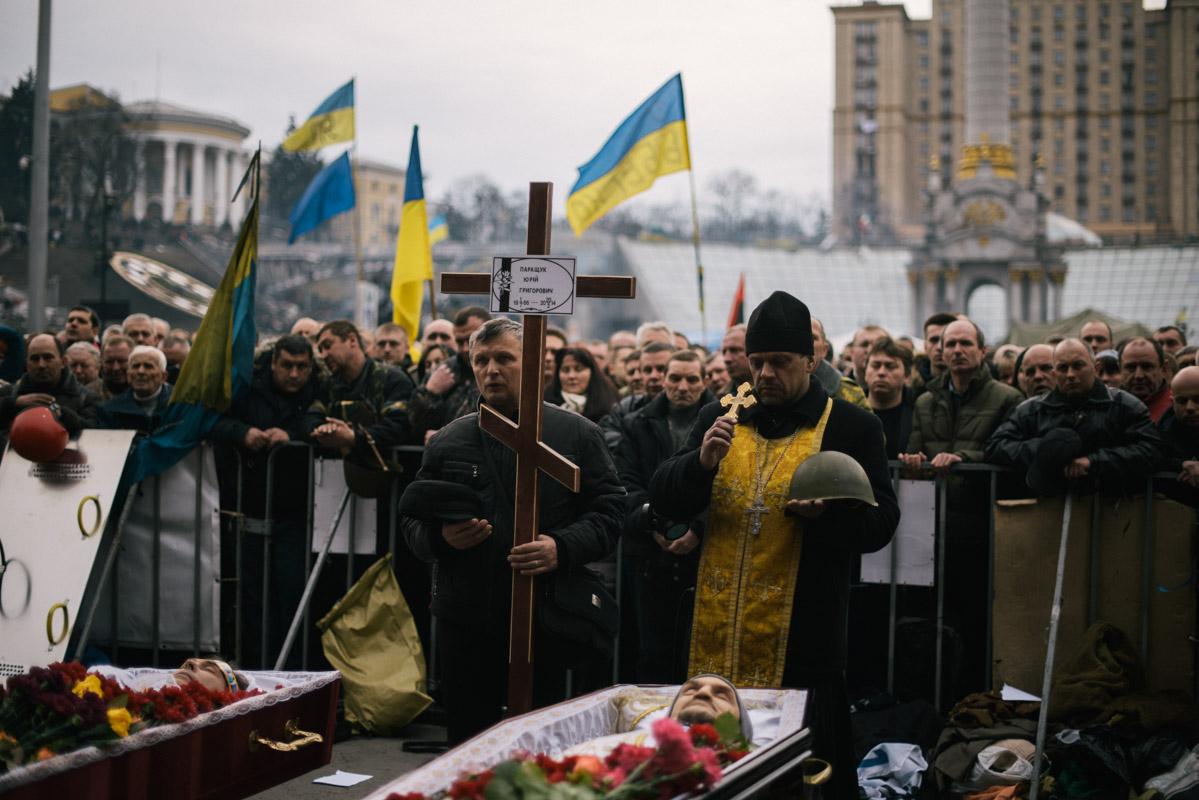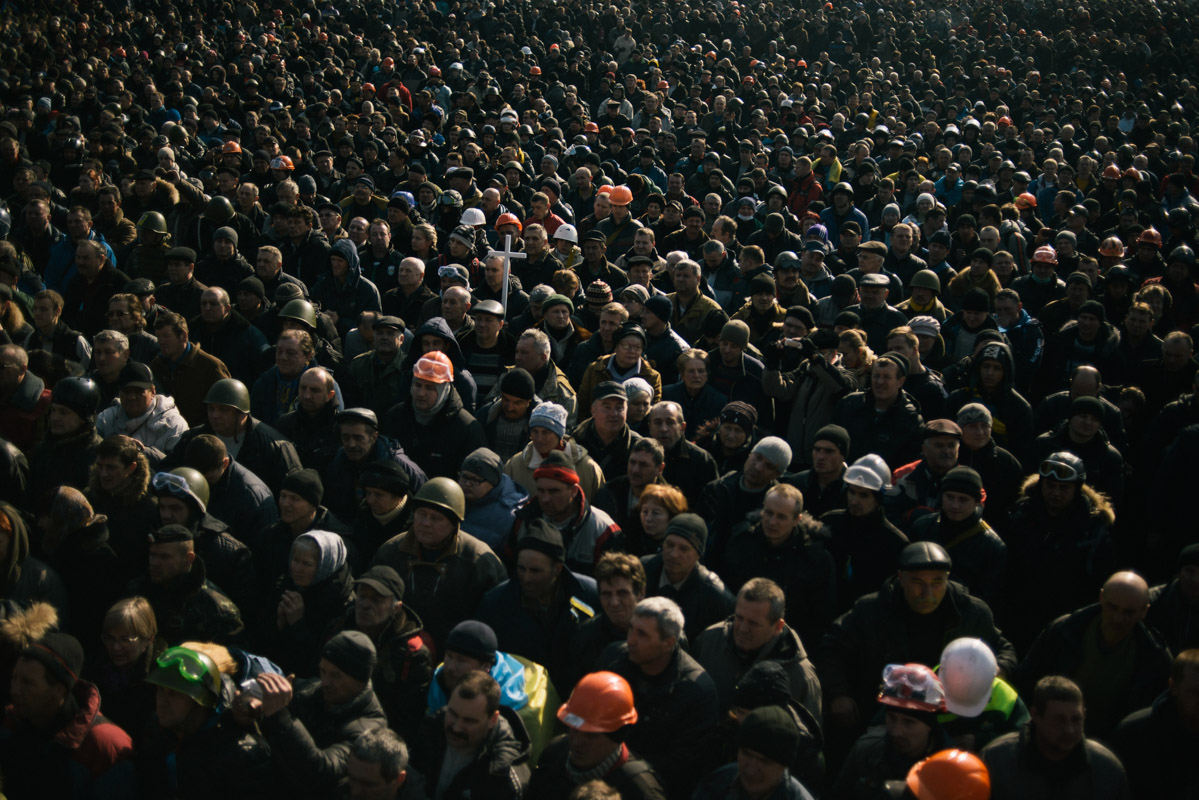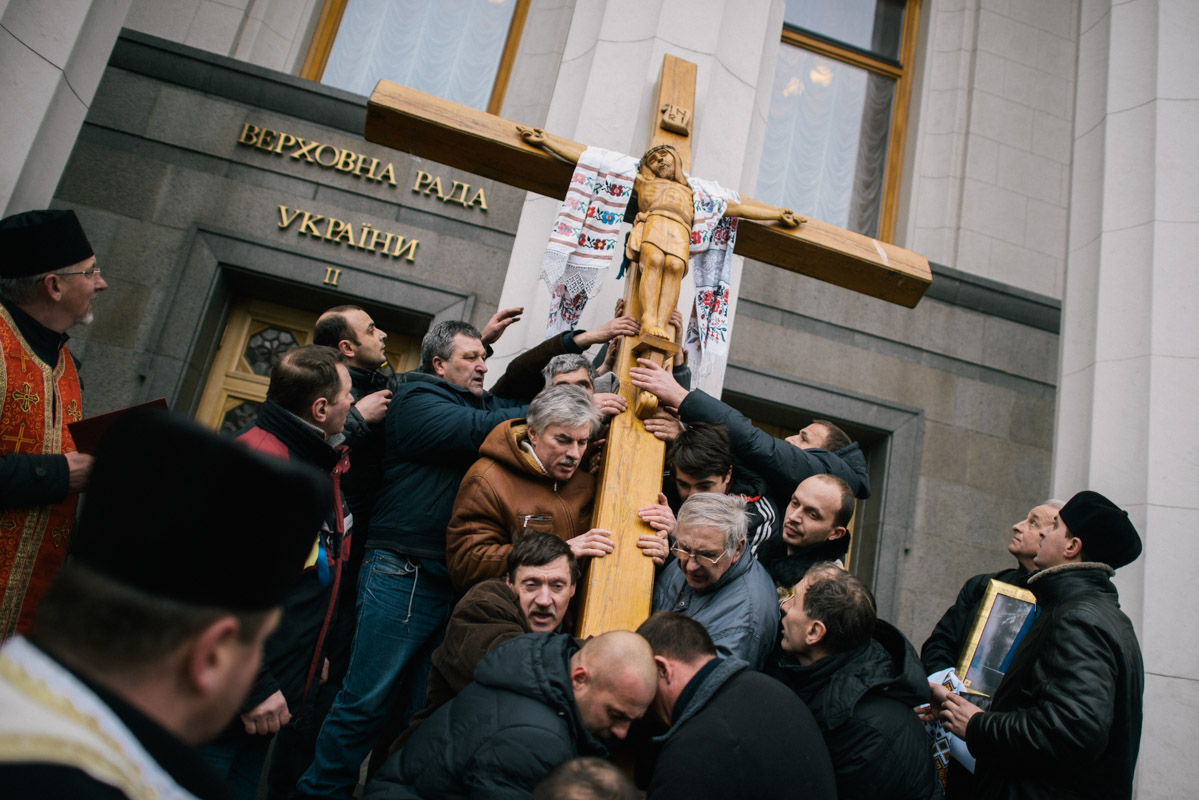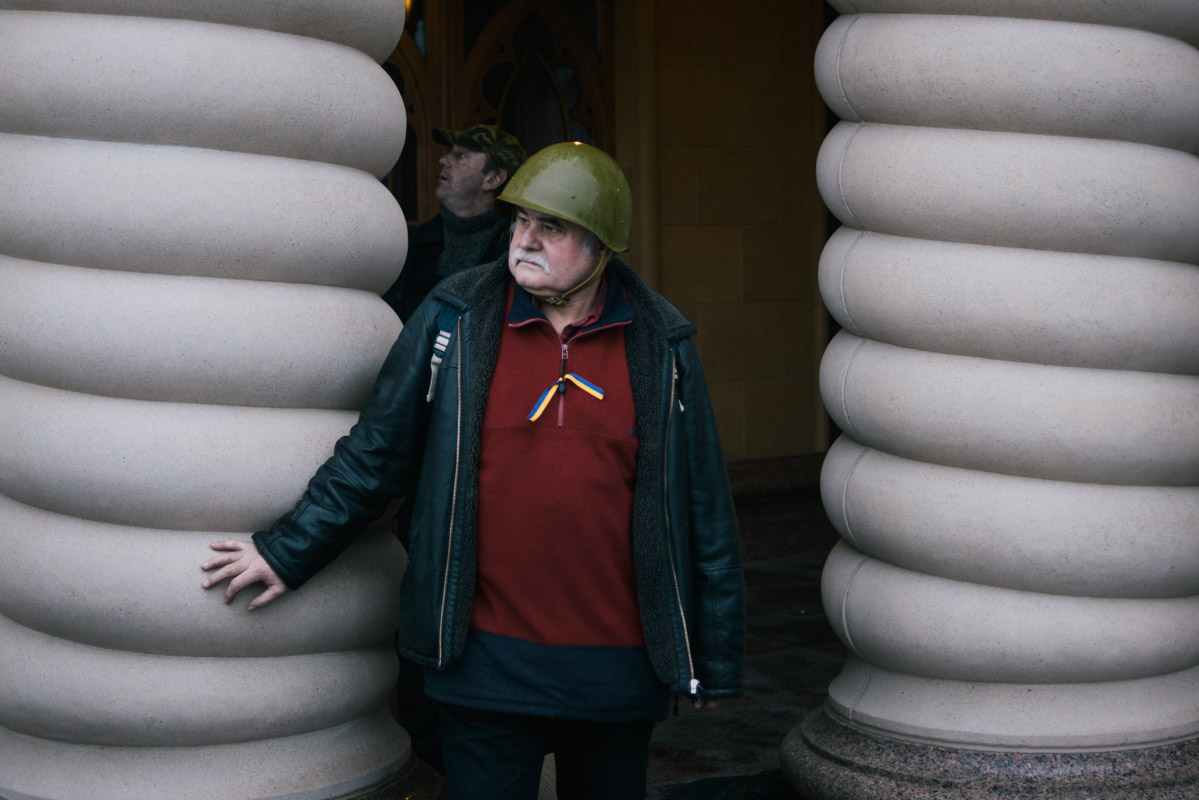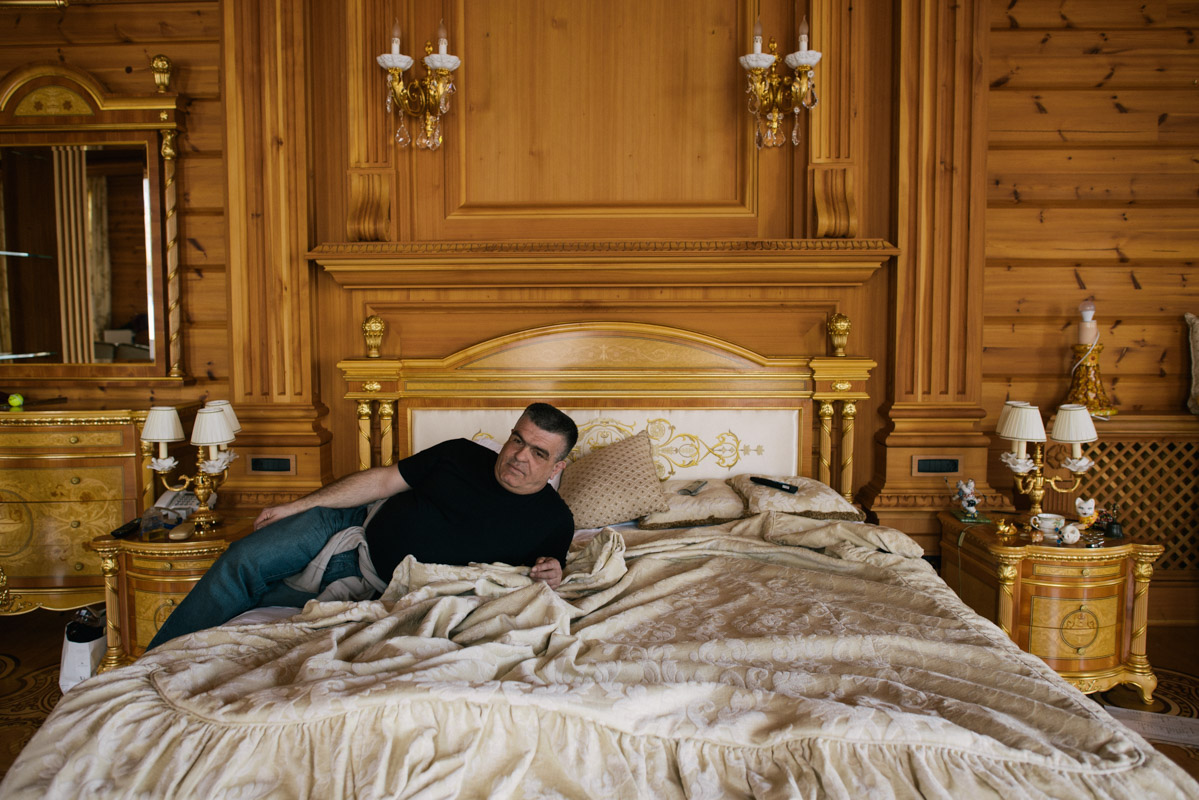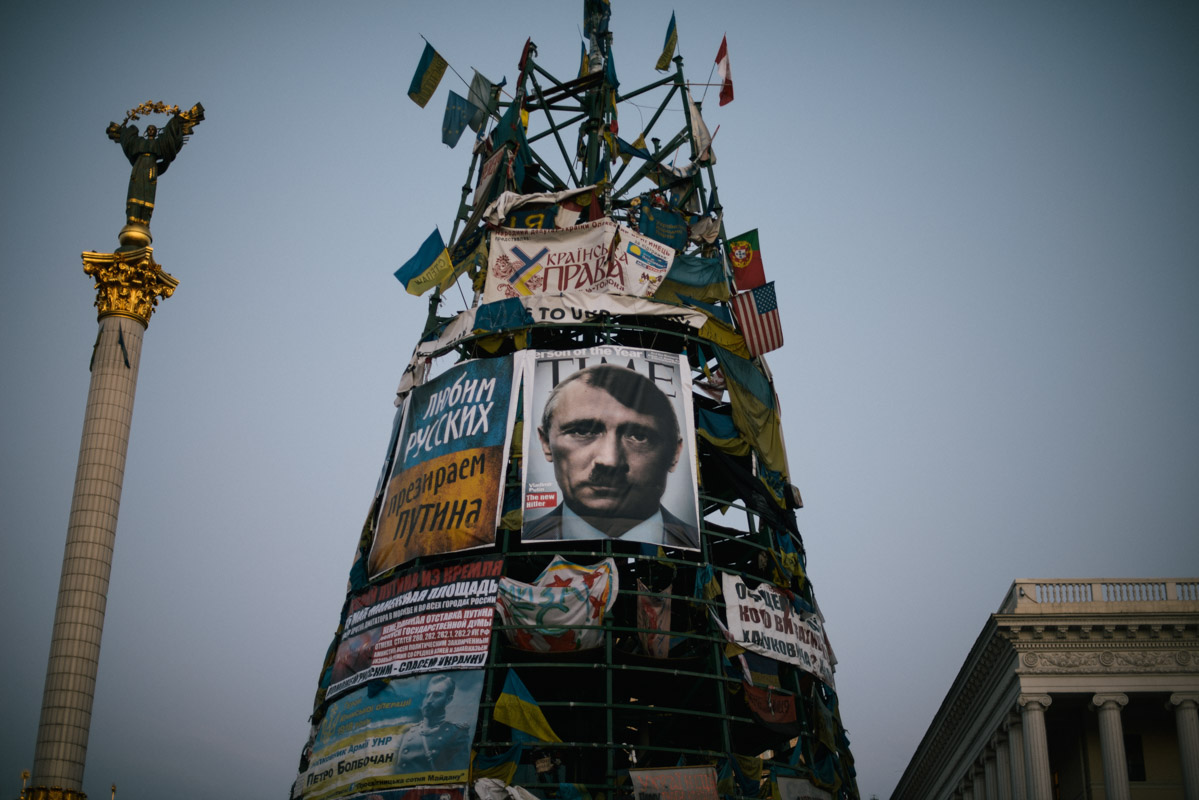Chapters of a revolution
Ukraine, 2013-2014
I was in Kiev to visit some dear friends when I found myself in the middle of a revolution. I was living with them and their children few kilometres away from the central square Maidan. I saw the mood of my friends turning from doubtful but supportive, in the beginning, to frightened as the revolution turned violent. Many beautiful ideals and discussions formed during Maidan but when the protesters won, most of the achievements were soon hijacked in favour of nationalism as civil war erupted in the East with pro-Russian separatists.
I – In the last days of November 2013 a crowd of thousands, occupied the main square of Kyiv, Maidan Nezalezhnosti (Indipendence Square) to protest against the decision of the Ukrainian government to suspend the process of integration of Ukraine into the European Union. There is hope that the European laws would offer a core to human rights and could set a limit to corruption and curb the powers of the Ukrainian president Viktor Yanukovych and other oligarchs. For nearly two months Maidan remained largely an example of very well self-organised and non-violent protest but also ignored by the government and downplayed by national media.
II – When on the 16th of January the Ukrainian parliament passed anti-protest laws, which criminalised the protesters of Maidan, for the first time the protest turned violent: many were arrested and the first casualties were registered in the following days. Protesters started to wear armour, carry shields and protect their identity with balaclavas. They formed 40 different self-defence units (Samoobrona Maidanu) to defend the square. Dasha, 18, a student of social journalism, was assigned to the 14th: “I was just gathering under the stage and hoping for a better world, then I realized this wasn’t enough”, she says. “I understood I am the only responsible for my own future. I grew into a real soldier.
III – Major clashes erupted on the 18th of February when 20,000 protesters marched on Ukraine’s parliament in support of rolling back the Constitution of Ukraine to its pre-2004 form. Police managed to force back protesters and soon started to storm Maidan. The next day Kyiv awake in an apocalyptic scenario, at least 26 people died, half of Maidan is burning, schools and undergrounds are closed. In the early morning of the 20th protesters managed to regain the terrain lost but soon snipers’ bullets stopped them. In few hours the total death toll of the revolution raised to more than hundred victims.
IV – After a last attempt to compromise with the opposition by signing a peace deal, Yanukovych left Kyiv. While funerals took place in Maidan, the Parliament voted to declare vacant the chair of the President. Oleksander Turchynov was appointed as interim president until elections. Thousands of people visited the mansion of the ousted president in the nearby village of Mezhyhirya. Thanks to a private zoo, a golf course, a dog clinic, a shooting range and his collection of 70 cars, the 137-hectare property (almost the same size of Monaco) became a symbol of Ukrainian corruption in high places. As the protesters of Maidan were celebrating soon Russia, seeing lost its grip on Ukraine, invaded Crimea and fomented a civil war in the East of Ukraine.



